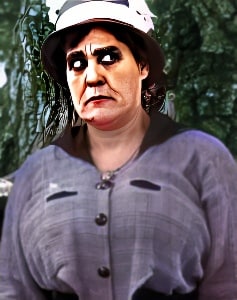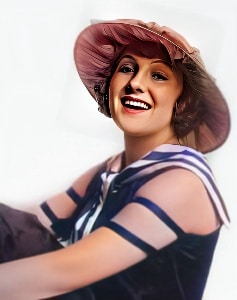 Phyllis Allen, an accomplished actress, made significant contributions to the early years of American cinema.
Phyllis Allen, an accomplished actress, made significant contributions to the early years of American cinema.
Born on November 25, 1861, in Huntsville, Alabama, she emerged as a versatile performer during the silent film era, leaving an enduring mark on the history of Hollywood.
During the early 20th century, silent films were the dominant form of entertainment, relying on nonverbal acting and visual storytelling. This medium demanded actors to convey emotions and narratives primarily through physical movements and facial expressions, a skill at which Phyllis Allen excelled.
One of the most remarkable aspects of her career was her association with the pioneering director and comedian Mack Sennett, a prominent figure in the early film industry. Sennett was known for creating slapstick comedies and was a driving force behind the success of the Keystone Studios.
Phyllis Allen’s collaborations with Mack Sennett are among her most celebrated works. She appeared in numerous Keystone comedies, contributing her comedic timing and acting skills to the ensemble. The Keystone comedies were known for their zany, chaotic humor, and Phyllis Allen played an essential role in these slapstick masterpieces.
In films like “A Flirt’s Mistake” (1914) and “A Movie Star” (1916), Phyllis Allen showcased her flair for physical comedy. Her performances often involved hilarious situations and absurd scenarios, which were characteristic of Sennett’s comedies. Her ability to engage with the chaotic and often unpredictable nature of these films made her a valuable asset to the Keystone team.
One of her notable collaborations with Mack Sennett was “Tillie’s Punctured Romance” (1914), one of the earliest feature-length comedies and a groundbreaking work in the history of cinema. The film starred legendary comedian Charlie Chaplin, Mabel Normand, and Marie Dressler, in addition to Phyllis Allen. This film marked a significant moment in cinematic history and highlighted her involvement in pioneering endeavors.
While Phyllis Allen was primarily known for her comedic roles, she also demonstrated versatility in her acting. She could take on dramatic and character-driven roles when needed, showcasing her depth as an actress. Her adaptability allowed her to navigate the ever-evolving landscape of silent cinema.
The transition to sound films marked a profound shift in the film industry, demanding new skills from actors. While many silent film actors struggled to make this transition, Phyllis Allen’s adaptability allowed her to continue her career successfully.
In conclusion, Phyllis Allen, with her notable contributions to the early years of American cinema, left an indelible mark on the history of Hollywood. Her collaborations with director Mack Sennett in the Keystone comedies, her participation in groundbreaking works like “Tillie’s Punctured Romance,” and her ability to navigate the transition to sound films all underscore her versatility and dedication to her craft. While her name may not be as widely recognized today as some of the leading actors of her time, her performances and her role in the evolution of American cinema remain a valuable part of the rich history of early Hollywood.
Loading live eBay listings...




